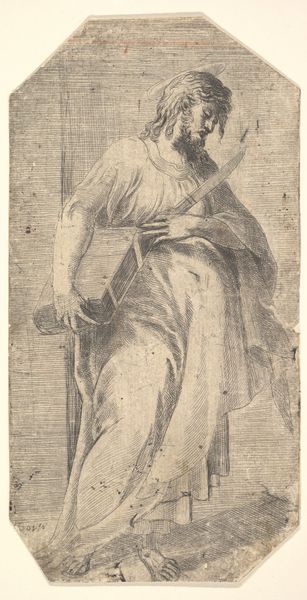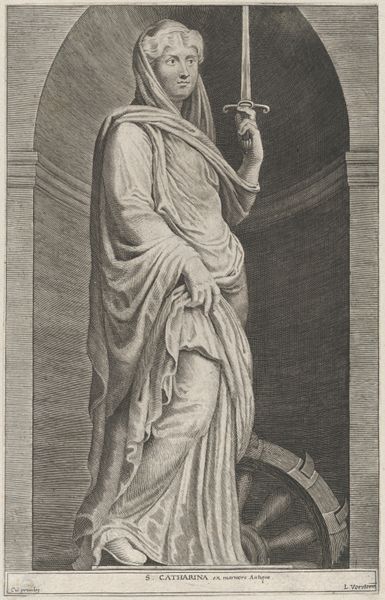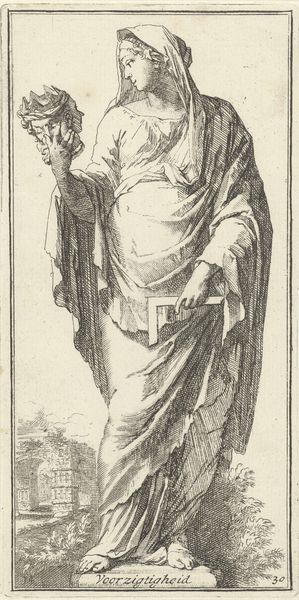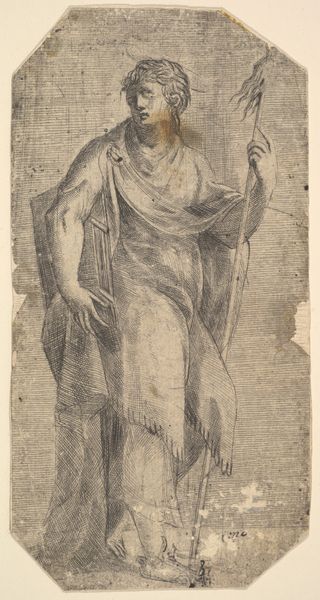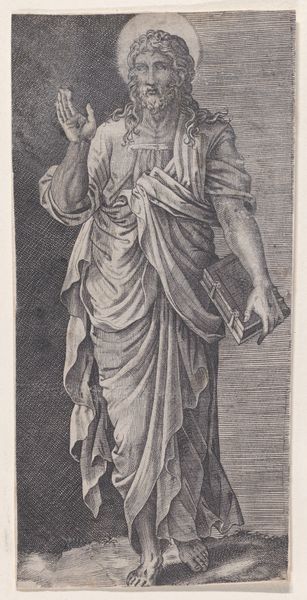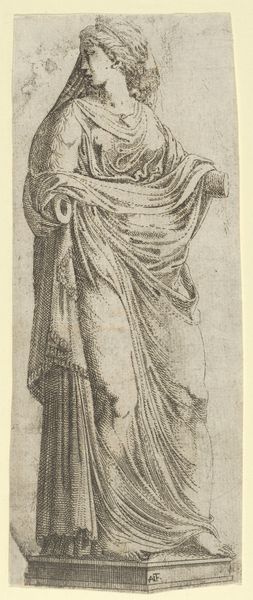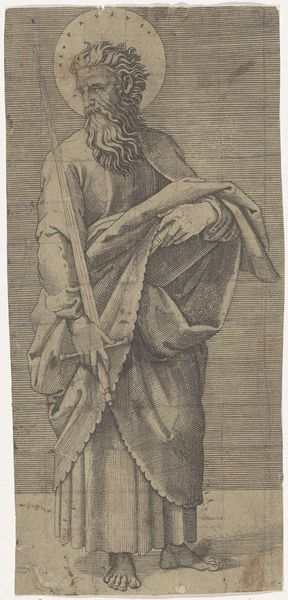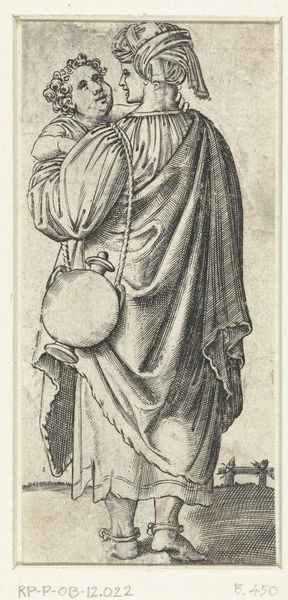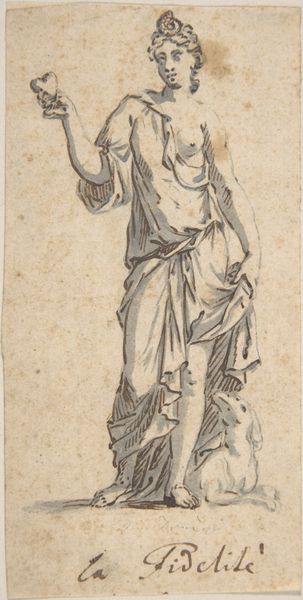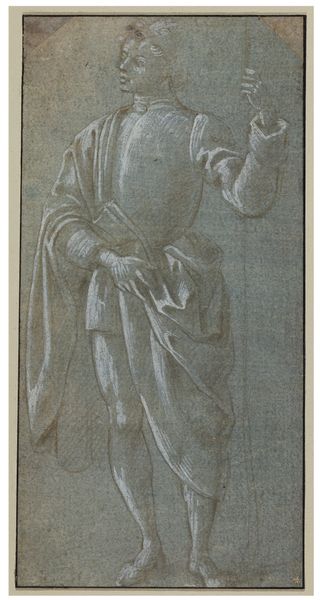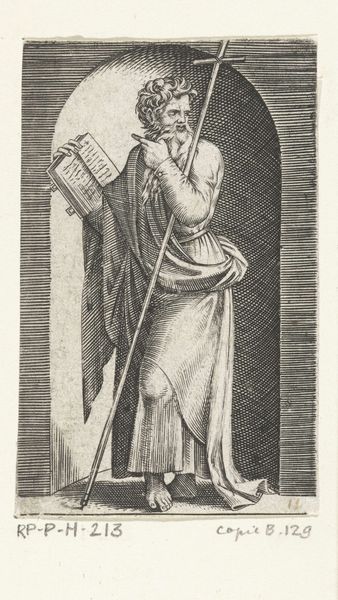
Saint Simon standing, supporting a book on his right thigh, from "Christ and the Apostles" 1543 - 1553
0:00
0:00
drawing, print, intaglio, engraving
#
portrait
#
drawing
# print
#
book
#
intaglio
#
figuration
#
11_renaissance
#
portrait drawing
#
history-painting
#
italian-renaissance
#
engraving
Dimensions: sheet: 8 11/16 x 4 1/2 in. (22 x 11.5 cm)
Copyright: Public Domain
Curator: Here we have Andrea Schiavone's intaglio print, "Saint Simon standing, supporting a book on his right thigh," dating from around 1543 to 1553. Editor: My first impression is one of austere dignity, surprisingly rendered through such delicate and fine lines. The textures create an ethereal quality. Curator: Exactly. Schiavone, an Italian Renaissance artist, was celebrated for his innovative approach to printmaking. Notice the etching technique used here, the fine network of lines, a testament to the skillful handcraft that produced multiple identical images. We tend to look at these images now with modern eyes. Editor: It’s interesting to consider the role prints played during the Renaissance. They allowed for wider distribution of imagery, thus impacting the visualization and interpretation of religious figures, as was the role of the church. Was the role of printmaking perceived differently then? Curator: Absolutely, these engravings circulated through society. Consider too that Schiavone did not always have direct patronage. The printing and selling of works could become, at times, the source of revenue for workshops to stay alive, supporting not only the artists but those prepping materials or assisting in print. Editor: That context helps us understand the layers of cultural dissemination in those years. It is almost as if you can see that delicate interplay of economics and religious ideals reflected in this image. What do you find most engaging? Curator: The Saint's robes appear less a depiction of fabric than a map of human endeavor, so it is to me a visualization of materiality. But the subject itself remains deeply important. Consider the public devotion, patronage, and art created for those saints to give visual voice to belief and dedication. Editor: And through printmaking, we're still encountering Saint Simon centuries later. That impact of reproducibility should also change our idea about authorship: these prints enabled distribution through multiple hands. I’m more inclined to appreciate that communal aspect when observing it today. Curator: True. Seeing that relationship, both between the subject and his moment in history but also its contemporary significance now that there is a larger global view, grants you and I different lenses and sensitivities when interpreting art. Editor: Indeed. Viewing historical art necessitates a continuous readjustment.
Comments
No comments
Be the first to comment and join the conversation on the ultimate creative platform.
